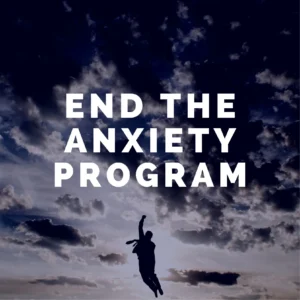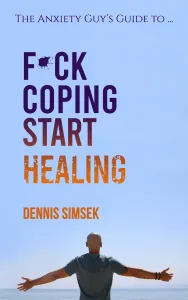Why these beleifs matter
I want to start straight from the heart. I healed my own health anxiety and I keep asking myself: what did I need to hear back then? What actually helped me stop coping and start healing? In this post I walk you through four core ideas that create a mental and emotional climate that keeps health anxiety alive. If you let these ideas sit in your head, they run deeper and fuel constant checking, worst-case thinking, and the feeling that your body is out to get you.
Use Code Healing20 for 20% OFF All Programs!

Table of Contents
Belief 1 – Judgments and opinions
How other people’s views get under your skin
I used to carry other people’s health ideas like a map that told me where danger lived. A parent, partner, or friend would say something like humans only live to 50 or 60 and a part of me would whisper, maybe that is true for me. Those words stick because we look up to those people and we spend time around them. Before you know it, every ache becomes a sign that time is running out.1
What I did to stop absorbing other people’s ideas
I started treating other people’s health talk as just that, talk. Opinions are cheap and often come from fear, not evidence. I practiced noticing a health opinion and saying to myself, that’s not mine unless I choose it. That small habit broke a huge chain. When I stopped giving those ideas weight, my checking reduced and my calm grew. This runs deeper than a quick fix; it rewires how I listen to outside voices.
Belief 2 – Predicting the future from the past
The trap of expecting the same outcome
Because I had bad experiences with panic or illness, I assumed the future would repeat the past. Every morning I felt a pull to stay in my comfort zone. I believed worry was protection. Worry felt like safety. So I stayed small, convinced that stepping out would bring the same pain.2
My rule for testing that belief
I started asking a simple question: is this fear a fact or a habit? Most of the time my mind was looping old footage, not current evidence. I practiced tiny exposures and logged outcomes. Over time I learned my life does not have to mirror my worst days. That truth runs deeper than fear and slowly makes more room for action.
Belief 3 – Identity misconceptions
Labels crush the natural you
I carried labels like I am an anxious person or I will always react that way. Those labels created a self who lived to protect a wounded child. I had to see those labels as stories I was telling myself, not the real me.
The wounded child and why it keeps sending alarms
Underneath the symptoms are memories stored in body and mind. The part of you that got hurt wants to keep you safe from similar pain, so it keeps sending alarm signals. I learned to name that part and show it a different outcome: small steps without catastrophic endings. When I taught that inner child the world could be safer than it remembered, the alarms quieted. This change runs deeper than motivation; it changes identity from inside out.3
Belief 4 – Future pacing and what-if beleifs
How living in tomorrow steals the present
My worst habit was living in the future. What if this happens? What if I get sick? That future focus became my identity and my protection plan. I turned off emotions because pain felt unbearable. That numbing made life smaller.
Bringing yourself into the five senses
I had to relearn how to live in the now. I practiced naming what I saw, heard, tasted, smelled, and felt. While eating, I said, I am eating this and this is what it tastes like. While driving, I noticed the music and what felt good about it. These exercises pull you out of catastrophic thinking and into actual experience. The practice runs deeper than a breathing trick; it changes how you relate to moments.
Moving forward: small steps that actually work
I want you to try three simple moves today:
- Notice one health opinion you carry and ask: is this mine?
- Do one tiny exposure to test a fearful prediction and write what really happens.
- Practice a five-sense check for two minutes and note how you feel afterward.
These shifts helped me stop seeing every symptom as proof of doom. Remember: symptoms are usually anxiety, not physical disease. You are more than anxiety.
If you liked this, please subscribe and leave a positive rating or review. For a guided program built to help you begin the healing journey, check out the CBT – End The Anxiety Program. I’ll see you soon.
Citations
- Wall, D. (2021, February 19). Health Anxiety – English Fact Sheets – ABCT – Association for Behavioral and Cognitive Therapies. ABCT – Association for Behavioral and Cognitive Therapies.
↩︎ - Katerina Rnic, David, & Martin, R. A. (2016). Cognitive distortions, humor styles, and depression. Europe’s Journal of Psychology, 12(3), 348–362.
↩︎ - Clinic, C. (2020, January 8). Cognitive behavioral therapy (CBT) is a structured, goal-oriented type of talk therapy. It can help manage mental health conditions and emotional concerns. Cleveland Clinic.
↩︎




